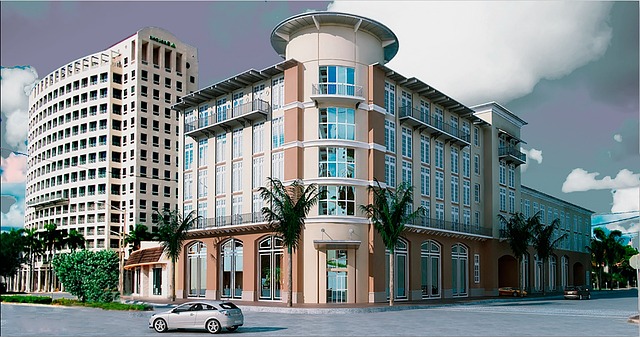Commercial real estate comprises diverse sectors like offices, retail, and industrial spaces, each tailored to specific business needs. Location is critical in determining occupancy and rental income, with prime areas offering excellent connectivity and high population density. Investors must understand local market trends, assess property conditions, and analyze demographic shifts to make informed decisions that maximize returns in dynamic real estate sectors influenced by economic booms, consumer behaviors, and demographics.
Exploring the diverse world of commercial real estate (CRE) is a strategic move for investors seeking profitable opportunities. This article delves into three primary sectors: office, retail, and industrial spaces, offering insights for informed decision-making. We’ll guide you through understanding unique property types, identifying crucial investment factors, and analyzing location’s role in shaping market trends and building values. Unlocking these secrets is the first step towards navigating and capitalizing on the dynamic real estate landscape.
Understanding Different Types of Commercial Real Estate

Commercial real estate encompasses a diverse range of properties designed for business purposes, each with unique characteristics and appeals. Office buildings, for instance, are tailored to meet the needs of companies seeking professional spaces for their staff, featuring amenities like high-speed internet, conference rooms, and sometimes on-site parking. Retail spaces, on the other hand, are optimized for customer interaction and sales, often located in highly visible areas with easy access and ample parking. These properties typically include display areas, sales counters, and back-of-house storage.
Industrial buildings, a third key category, are designed to support manufacturing processes, distribution centers, or warehouse operations. They offer ample space for large-scale activities, robust infrastructure, and loading docks for efficient material handling. Each type of commercial real estate serves distinct purposes, catering to different business requirements and strategies, whether it’s the collaborative environment of offices, the customer-centric focus of retail, or the expansive needs of industrial operations.
Key Factors to Consider When Investing in Office, Retail, or Industrial Spaces

When considering investments in office, retail, or industrial spaces, several key factors come into play. Location is paramount; proximity to transportation, amenities, and target demographics significantly impacts occupancy rates and rental income. Understanding the local real estate market dynamics, including supply and demand trends, is crucial for making informed decisions.
Another vital consideration is property condition and potential for expansion or renovation. Assessing infrastructure, systems, and layout ensures the space aligns with intended use and future growth needs. Additionally, analyzing demographic shifts, consumer behavior patterns, and sector-specific trends can help predict market demands and maximize investment returns in these dynamic real estate sectors.
The Impact of Location and Market Trends on Building Value

The location of a building plays a pivotal role in its real estate value, as it significantly influences accessibility and appeal to potential tenants or buyers. Prime areas with excellent connectivity, proximity to urban centers, and high population density tend to command higher rental rates and property values. For instance, office spaces in bustling business districts often attract tech startups and established corporations due to the ease of networking and client access. Similarly, retail buildings on main streets or within popular shopping malls can benefit from increased foot traffic and exposure.
Market trends also dictate building value over time. Real estate fluctuations can be driven by economic booms or recessions, changing consumer behaviors, and shifting demographics. For industrial properties, locations with easy access to transportation networks may become more valuable as e-commerce expands. Conversely, traditional retail spaces might face challenges from online shopping trends, leading to shifts in market demand. Staying attuned to these location-based dynamics and market forces is crucial for investors and developers aiming to maximize the potential of their real estate holdings.






